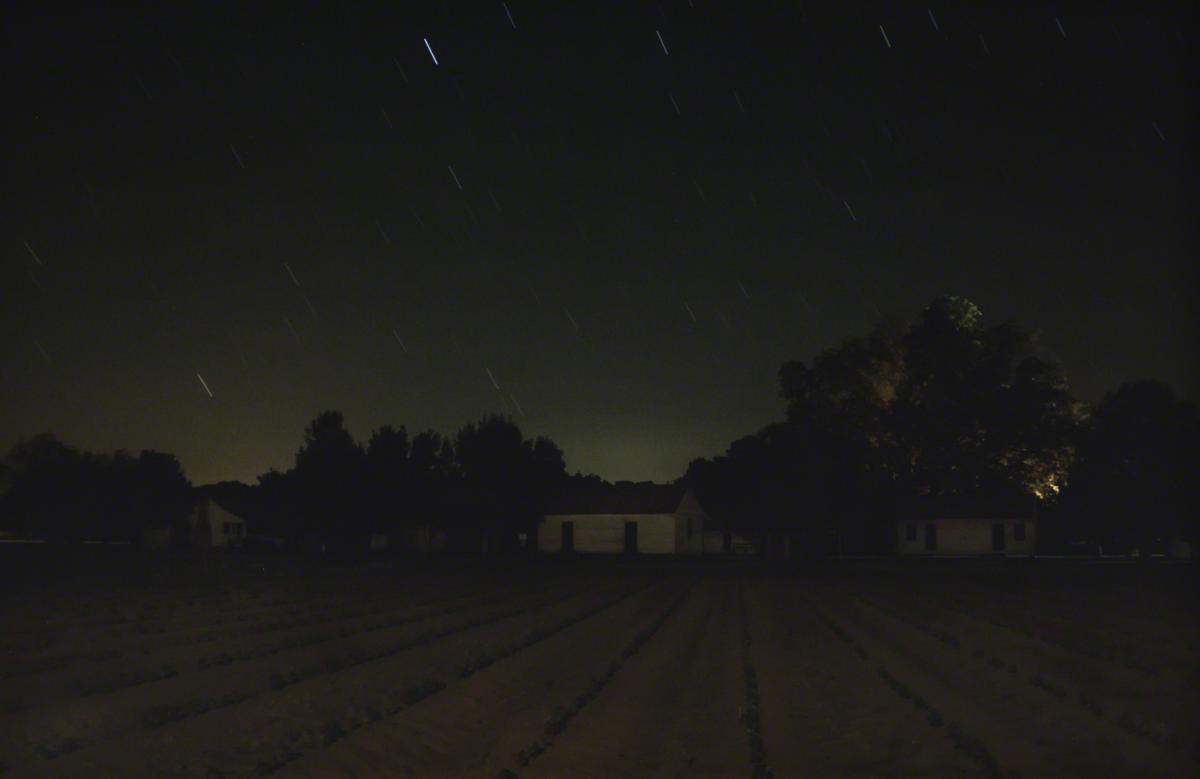Stopover, Frogmore Plantation, Concordia Parish, Louisiana
Jeanine Michna-Bales ( 2014 )

I first opened Jeanine Michna-Bales’s photographic essay, Through Darkness to Light, I was struck by the haunting quality of the photographs. They are dark, foreboding, and provocative. I contemplated each image in awe and wonder. As a Black woman playwright, I felt the images evoke countless untold stories of enslaved people fighting for freedom and to be seen as human beings.
Each slave was considered to be only three-fifths of a human being for purposes of legislative representation and tax responsibility. Slavery was dehumanizing in every possible way, and the subsequent erasure of the stories of our forebears from history only further discounts our own life experiences and our role in society. These photos bring the stories of my ancestors to light.
Michna-Bales grew up in the Midwest, where the Underground Railroad provided passages to freedom for people fleeing slavery. She began her research with a curiosity about the landscape that surrounded her. She imagined the journey a fugitive might make under the cover of darkness, trusting the path would lead to deliverance.
Her series, thirteen images from which are owned by The Phillips Collection, grew out of a breadth of rich primary resources, including song lyrics; quotes from abolitionists; slave narrative texts; and images of maps, advertisements by slaveholders for the sale and exchange of enslaved people for goods and cash, abolitionist pamphlets and newspapers, illustrations, and minutes taken from anti-slavery meetings.
But the true power of this body of work is how it teaches us to see and examine our surroundings. The photographs were taken in the evening, at night, and during the early dawn. You have to adjust your eyes to see them, to make out the shape, to judge the distances, and to determine depth. Michna-Bales is undoubtedly skilled and knowledgeable at her craft. But when I saw the image of Within Reach, I caught my breath. The way the sun peeks out from behind the clouds feels like the embodiment of hope. I was impressed by how she captures such rich tones and colors with so little light.
Taken as a whole, her images reminded me that history is not merely a series of dates that lead to culminating events. History is a complex and complicated, interconnected web of lived experiences. Like the photos that require us to adjust our eyes to see them clearly, we have to sit with our history and wrestle with our understanding of the world in order to understand and appreciate it.
The searing beauty of Michna-Bales’s photographic essay is that it reveals just how treacherous the journey toward freedom was. These images speak of a time when strangers of different races collaborated in the common struggle for freedom. The people who made up the Underground Railroad believed that all human beings deserved a chance to be free and that freedom was worth any sacrifice. More than anything, Michna-Bales’s photos help to weave the stories of the Underground Railroad into our history in a concrete and nuanced way.
Text by Jacqueline E. Lawton, from Seeing Differently: The Phillips Collects for a New Century (The Phillips Collection in association with Giles, 2021)